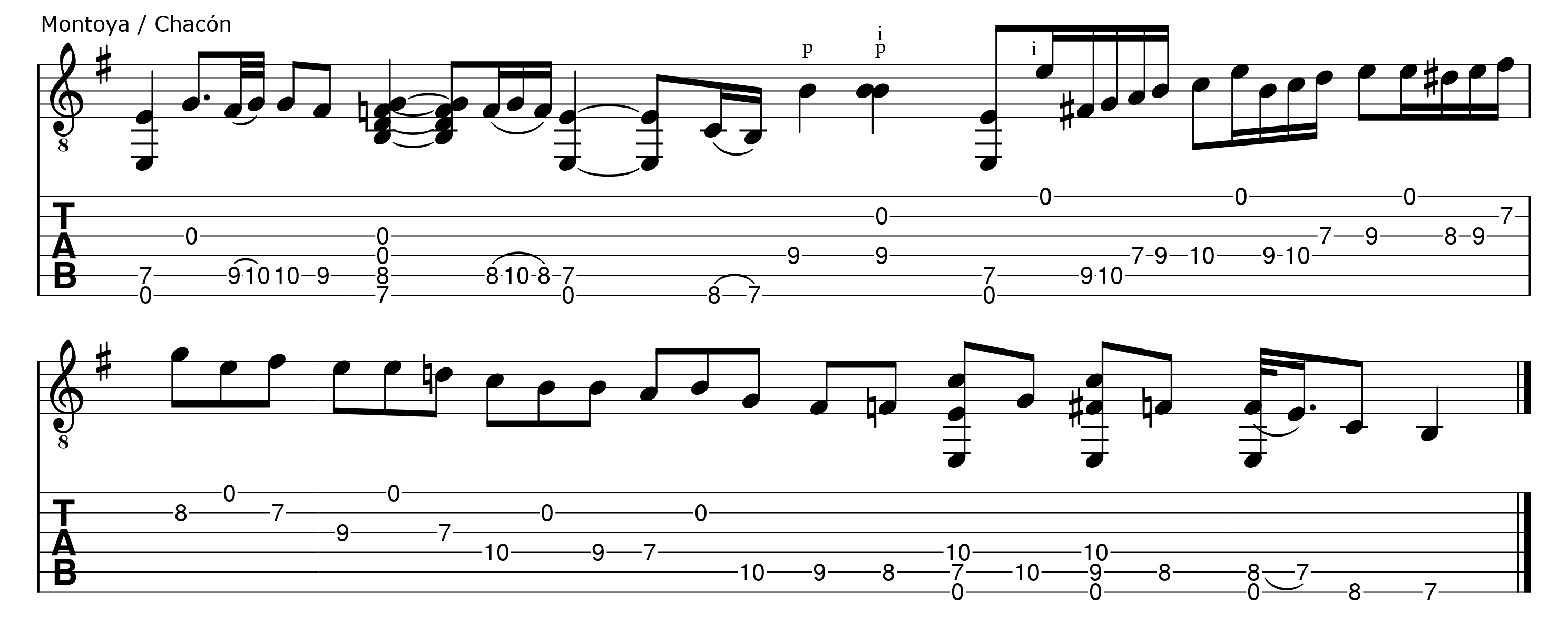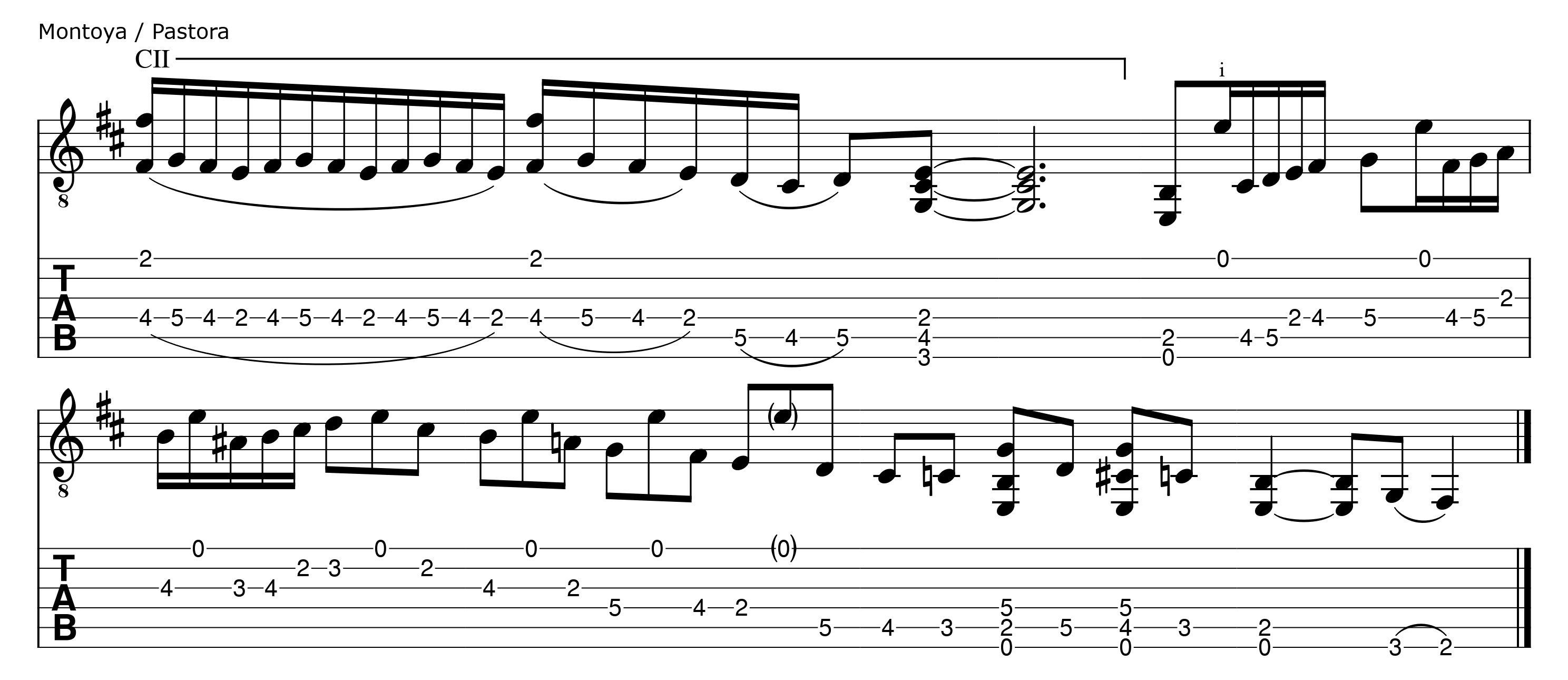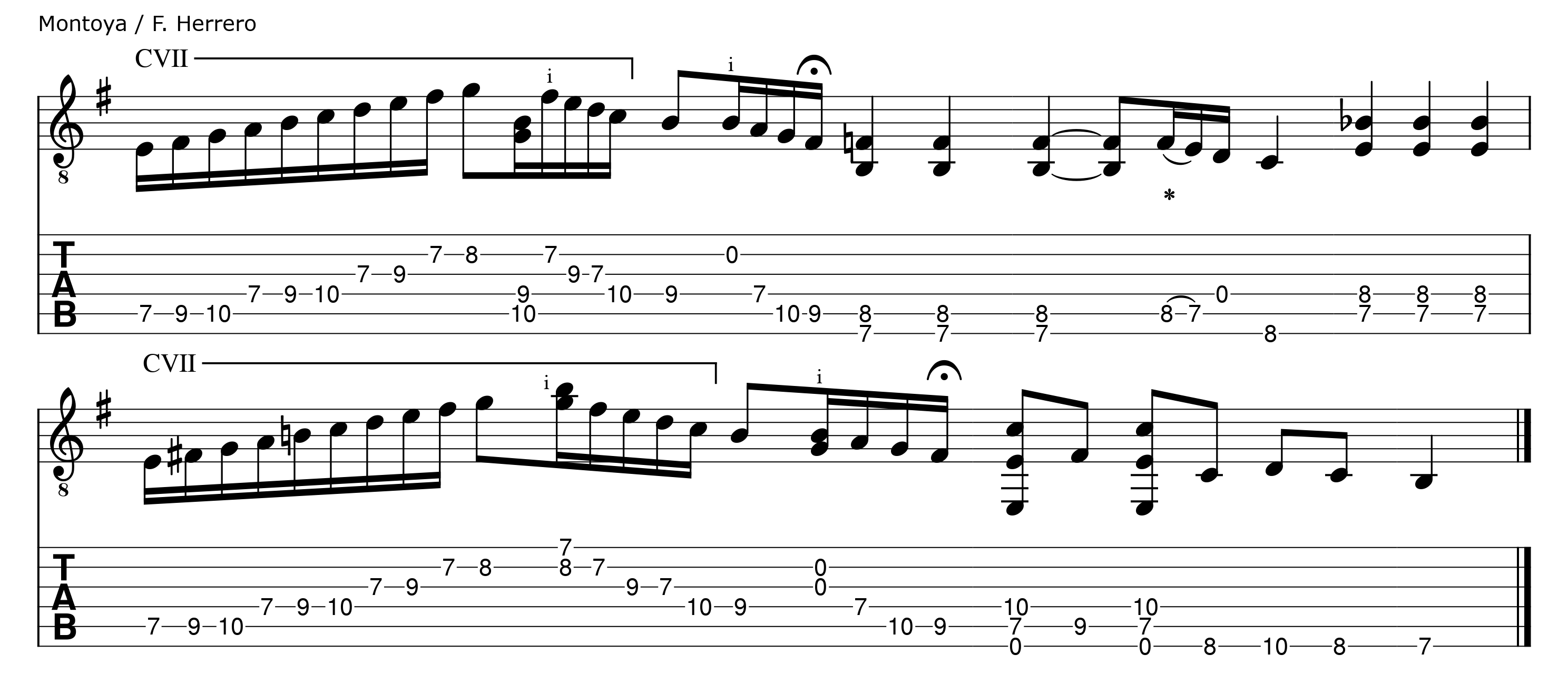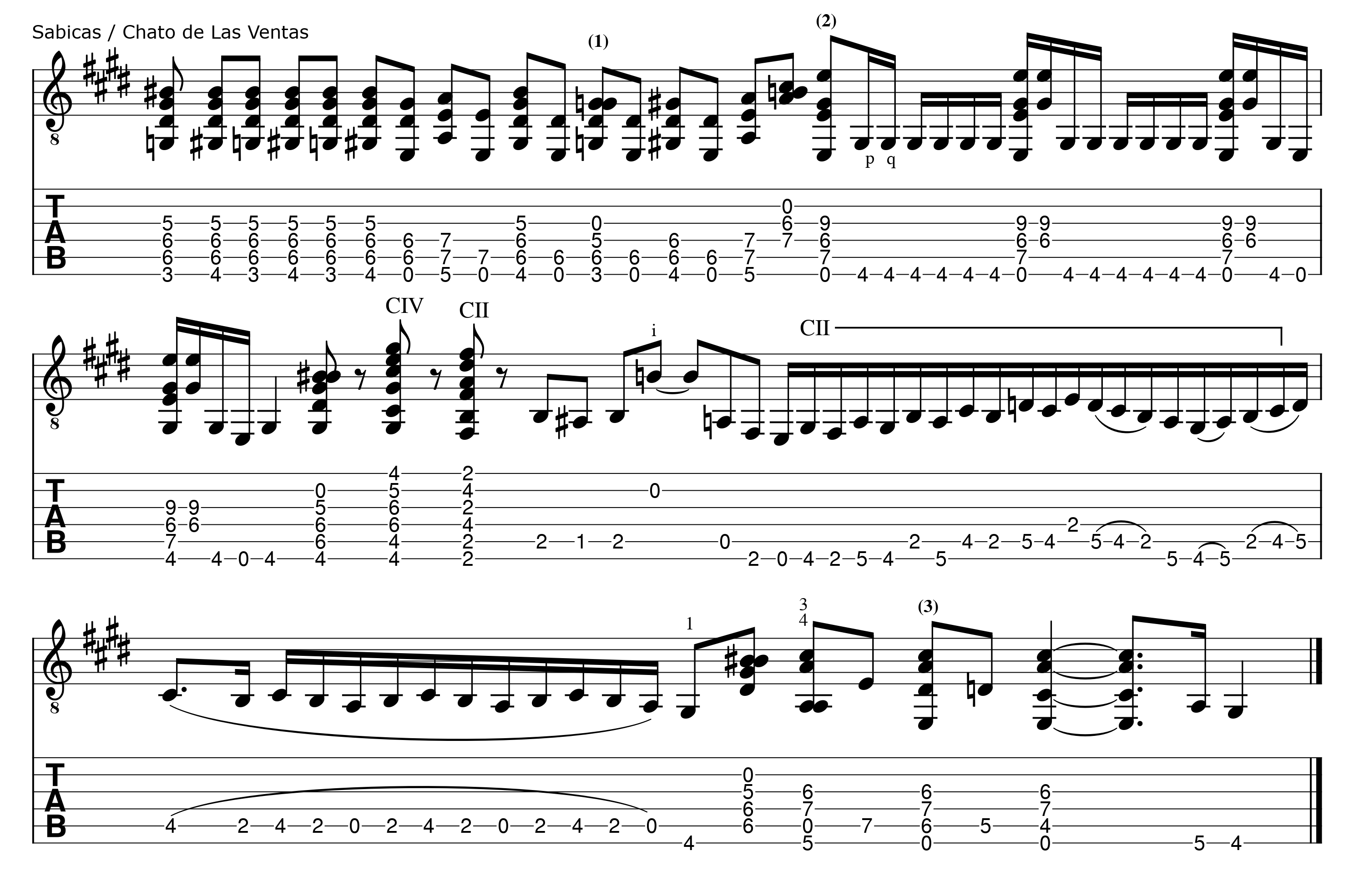
This unusual cierre (concluding phrase) appears in the keys of toque de granaína (B-C), toque de Levante (F sharp-G) and toque de minera (G sharp-A) in the recordings of several guitarists. Ramón Montoya (b. 1879) seems to be its creator, as it appears in at least 10 of his accompaniment recordings made between 1910 and 1930 and in his recordings of solo guitar. In all three keys, the cierre is based on the same left-hand position over the open sixth string and is played carefully with the thumb to sound full and clear. The chords can be arranged in two basic ways, as seen below. Notice that, in the third chord of the second variation, the fifth string is fretted in the key of toque de granaína and is played unfretted in the other keys.
In toque de granaína:

In toque de Levante:

In toque de minera:

About these transcriptions, there is no fixed rhythm in "free" playing styles such as tarantas, malagueñas, granaínas, etc. (toques levantinos), and the time values seen here are only an approximation. Although rhythmic contexts appear at certain points in the music, their duration varies greatly and melodic lines are expressed in a highly dynamic manner. In general, the thumb is used for everything except the rhythmic counterpoint on the treble strings, which is played with the index. It is also worth noting that the recordings from which these examples were taken contain a wide range of singing styles: malagueñas, tarantas, granaínas, levanticas, cartageneras, mineras, etc.
By the end of the 1920s, Ramón had developed the cierre to conclude several different falsetas in all three toques. Let's have a look at two of the finest examples from that period, when his playing was probably at its peak:
In toque de granaína, Ramón recorded this falseta with Antonio Chacón in 1928 (Gramófono AE 2.052 "A qué tanto me consientes"). Click here to listen.

In toque de Levante with Pastora Pavón "Niña de los Peines" in 1929 (Polydor 220.046 "Del convento las campanas"). Click here to listen. The falseta begins with a series of slurs that Sabicas and others recorded in toque de granaína (at the seventh fret).

The cierre is heard in older recordings of Ramón and other guitarists, especially at the end of an old falseta that may be its origin. Let's see some examples:
In toque de granaína, Ramón with Fernando el Herrero in 1910 (Zonophone 552.200 "De noche y día"). Click here to listen. This example of the old falseta is from one of Ramón's first 78-rpm recordings (made after his cylinder recordings with Chacón). In the score, the fermata represents a brief pause that probably has more to do with the placement of Ramón's hands than with his expression of the idea, and the asterisk indicates a musical idea related to another in the following falseta (recording of El Mochuelo, see below). Ramón recorded a nearly identical version of the falseta in 1914 with Niño de Medina (Gramófono 652.137).

In toque de Levante, the same falseta is heard in a recording of El Mochuelo (Homokord 70.912 "(De Alicante voy a) Elche") with an unidentified guitarist. Click here to listen. The beginning is identical to Ramón's and the asterisk indicates a musical idea related to another in the preceding falseta (see above). The E minor chord at the end of the first volta bracket is strummed, probably using all four fingers and dragging the thumb. According to the information I have, the recording was made between 1910 and 1913 and the guitarist may be Joaquín el Hijo del Ciego (b. 1877?), although it appears that there are no other recordings of toque de Levante of said guitarist.

In toque de granaína, Miguel Borrull padre (b. 1866) recorded this version of the old falseta with Cojo de Málaga in 1923 (Gramófono AE 967 "En mi gorra llevo el ancla"). He starts on the second note of the falseta and ends without the cierre of Ramón. Click here to listen.

In toque de Levante, Ramón recorded this outstanding falseta with Niño de las Marianas in 1912 (Gramophon 3-62242 "Un pañuelo me encontré"). Click here to listen. Here we see how he rearranged the strong ascending line of the old falseta, perhaps as part of the process of development of the ideas he recorded from the late 1920s onward. At the beginning of the falseta, after the fifth string is played at the third fret (C natural), some dissonance is heard in the recording, which is probably the open strings, as indicated in the score. I prefer to play a D9 chord with the sixth string at the second fret (F sharp), the third string at the second fret (A) and the second string at the first fret (C natural).

In toque de minera, here is Ramón's brilliant adaptation of the old falseta and cierre to what was probably a very recently developed playing key at the time. This appears to be the first recording of toque de minera, made in 1922 with La Antequerana (Gramófono AG130 "Muchacha del Molinete"). Click here to listen. Notice that, in this key, the harmonic implications of the cierre are different.

In toque de minera, Sabicas recorded this astounding falseta in 1930 with Chato de Las Ventas (Parlophon B-26.610-I "Y lo sabe el mundo entero"). Click here to listen. At the beginning, he transfers to the bass strings a chord progression often played on the trebles in other toques levantinos (as heard in recordings of Ramón, Sabicas, Borrull hijo and even Diego de El Gastor) with an ingenious fingering of the D sharp chord (1). He goes on to play alzapúa (the q indicates a thumbed upstroke) that must have sounded like thunder in 1930 and is still surprising in its clarity and sonority. Here again, his left-hand arrangement is original and very interesting (2). He then plays a series of slurs with an index-finger barre (it took a lot of hard work to figure out this part), concluding with another ingenious fingering in an excellent variation on the cierre of Ramón (3) which he extends to include the third string. Incredibly, with the exception of a single note, he plays the entire falseta with his thumb.

In toque de granaína, the cierre is heard in the accompaniment of Niño Ricardo with el Pena hijo in 1928 (Regal DK-8580 "La que habita en la carretera") and, in particular, in the recordings of solo guitar of Ramón Montoya, Sabicas (Parlophone B 26.663, recorded in 1931) and Manolo de Badajoz ("Granaína 2"). Also, Luis Maravilla based part of his "Brisas granadinas" on these ideas of Ramón (his cierre is not the same). In toque de Levante, Miguel Borrull hijo recorded the cierre in 1923 with Cojo de Málaga (Pathé 2.243 "A los pies de un soberano"), and Sabicas recorded it in 1931 with Angelillo (Gramófono AE 3.503 "Pueblo donde yo nací"), ending the falseta with a series of slurs that Ramón recorded in toque de minera in his recordings of solo guitar.